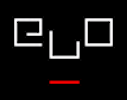Your cart is currently empty!
Reviews
-
New RCCS Reviews
New book reviews in Cyberculture Studies include: Dani Cavallaro’s Cyberpunk and Cyberculture: Science Fiction and the Work of William Gibson reviewed by Samir Chopra; Peter Ludlow’s Crypto Anarchy, Cyberstates, and… Read more.
·
-
RCCS Book Reviews
RCCS’s book reviews for April include: Frank Webster’s Culture and Politics in the Information Age: A New Politics? reviewed by Joseph Savirimuthu; Henry C. Lucas, Jr.’s Strategies for Electronic Commerce… Read more.
·
-
Reviews in Cyberculture Studies
Reviewed in this issue of Cyberculture Studies: Evolving Traditions, Artists Working in New Media, The Internet and Health Communication: Experiences and Expectations, Virtual Gender: Technology, Consumption and Identity. Read more.
·
-
Review of Stephanie Strickland’s V in Publisher’s Weekly
The following is a quote from a review in Publisher’s Weekly: “If Brian Kim Stefans’s The Dreamlife of Letters (2000)-a gorgeous send-up of Freud, lettrism and contemporary gender-bending-was the first… Read more.
·
